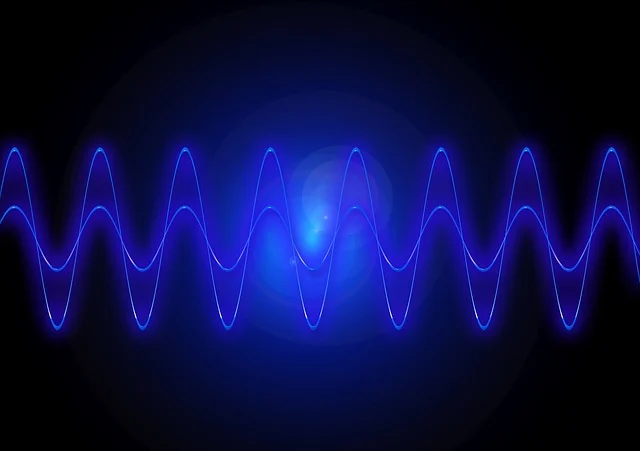A form of periodic motion known as simple harmonic motion (SHM) occurs when an item oscillates around a mean position in such a way that the restoring force works in the opposite direction of the displacement and is exactly proportionate to the displacement. A mass-spring system, vibrating strings, and a pendulum’s motion are a few examples.

Velocity and Acceleration in Simple Harmonic Motion (SHM)
How acceleration and velocity act in this kind of motion to gain a better understanding of SHM.
Displacement x(x) is the particle’s distance from the mean location at any given moment during simple harmonic motion. The formula is x(t) = A cos(ωt + ϕ).
Where A is amplitude, ω is angular frequency and ϕ is phase angle.
The velocity of a particle performing SHM is the rate at which its displacement changes with respect to time.
Differentiating equation (i) with respect to time.
v(t) = dx(t) / dt = d / dt [A cos (ωt + ϕ)] = v(t) = -ωA sin(ωt + ϕ)
Where v(t) is the velocity of the projection of reference particle in SHM.
1. Displacement in SHM
The following equation provides the displacement of an object in SHM from its mean (equilibrium) location at any given time t:
x(t) = A sin(ωt + ϕ)
Where:
x(t) = displacement at time t
A = amplitude of oscillation (maximum displacement)
ω = angular frequency (in radians per second)
ϕ = phase constant
t = time

2. Velocity in SHM
The pace at which displacement changes in relation to time is called velocity. The displacement equation can be differentiated to obtain:
v(t) = dx / dt = Aω cos(ωt + ϕ)
This can also be written using a sine function:
{v(t)}2 = ω A2 − x2
With a maximum at the mean position (x = 0) and zero at the extreme positions (x = ±A), this shape demonstrates how velocity is dependent on displacement.
points about velocity in SHM:
Maximum velocity vmax = Aω
Velocity is zero at the turning points (extreme positions).
It is highest when the object passes through the equilibrium position.

3. Acceleration in SHM
Acceleration is the rate of change of velocity with respect to time. Differentiating the velocity equation:
a(t) = dv / dt = −Aω2 sin(ωt + ϕ)
But since x = A sin(ωt + ϕ), we can also write: a(t) = −ω2x
In SHM, this equation is vital. It informs us that:
The displacement and acceleration are exactly proportionate.
One important aspect of SHM is that it is always pointed in the direction of the mean position, which is opposed to displacement.

Points about acceleration in SHM:
Maximum acceleration amax = ω2A
Acceleration is zero at the equilibrium position.
It is maximum at the extreme positions.
4. Graphical Representation
Although they are phase-shifted, the displacement, velocity, and acceleration graphs in SHM are sinusoidal and exhibit the same periodic pattern:
A sine wave represents displacement.
The displacement is led by a phase of π / 2, and the velocity is a cosine wave.
Acceleration is likewise a sine wave, but it is 180° (or π radians) out of phase with displacement, meaning it is in the opposite direction.
5. Important Relationships
Velocity and acceleration vary continuously during SHM.
All quantities repeat after a time period T = 2π / ω
Maximum values:
vmax = A ω
amax = ω2 A
Summary
Acceleration and velocity are essential for understanding how an item travels in simple harmonic motion. Acceleration, which is zero at the mean and highest at the extremities, the velocity is maximal at the mean position and zero at the extremes. Both numbers exhibit sinusoidal variation and are physically and analytically related to the angular frequency and displacement.

The velocity of a particle performing simple harmonic motion is given by:
v(t) = Aω cos(ωt + ϕ)
Alternatively, in terms of displacement: v2 = ω A2 − x2
Where A is amplitude, ω is angular frequency, and x is displacement from mean position.
Maximum velocity occurs at the mean (equilibrium) position, where x = 0.
Minimum velocity (zero) occurs at the extreme positions, where x = ±A.
The acceleration is given by: a = −ω2x
This demonstrates that acceleration is directed toward the mean position and is directly proportional to displacement.
Acceleration is maximum at the extreme positions of SHM where displacement is maximum, i.e., x = ±A.
Maximum acceleration: amax = ω2A
Velocity leads displacement by a phase of π / 2 radians (or 90 degrees). That means velocity is maximum when displacement is zero and vice versa.
In SHM, acceleration and velocity are both periodic and time-dependent.
• At extremes, when acceleration is at its highest, velocity is zero.
When velocity reaches its maximum (at mean position), there is no acceleration.
They are out of phase and constantly altering over time.